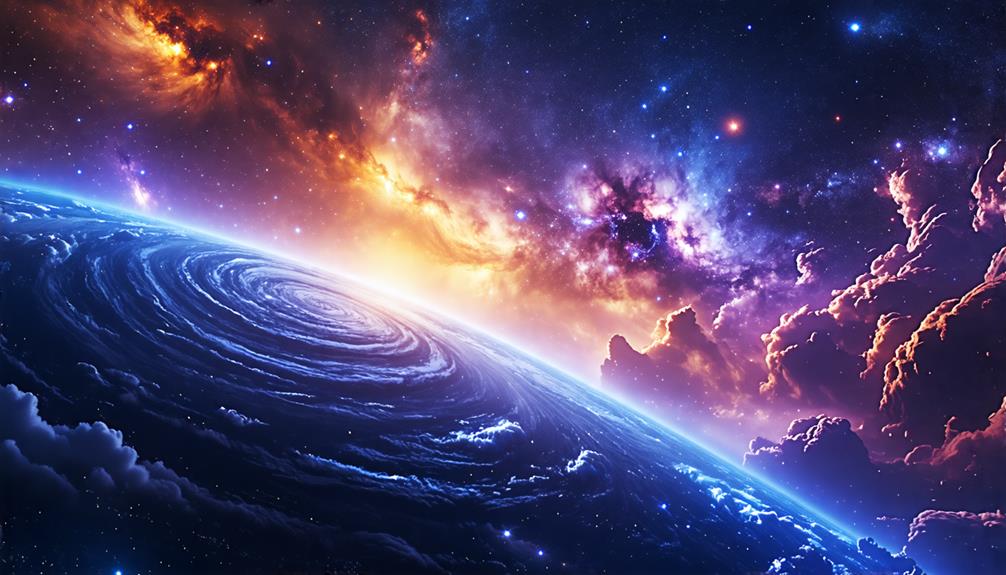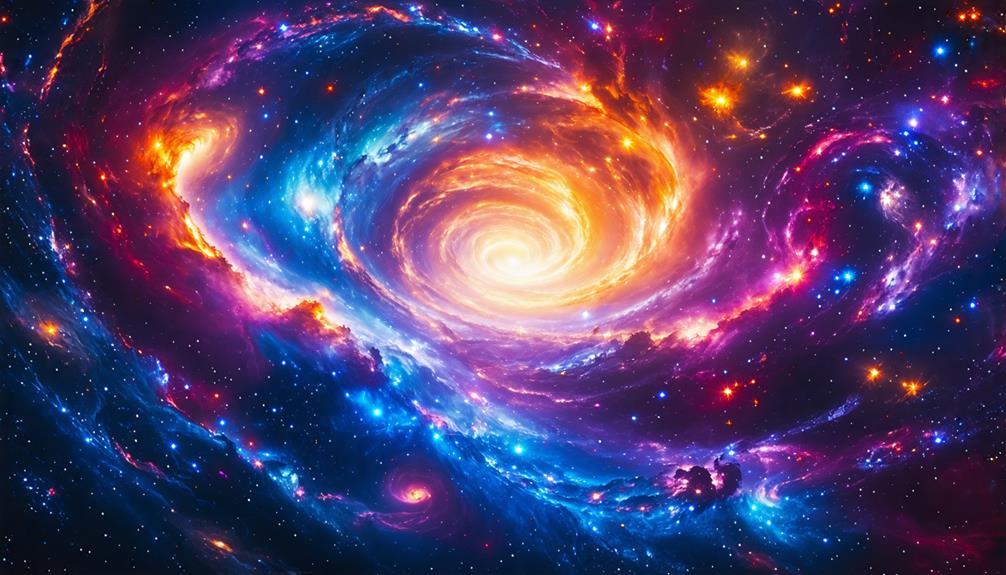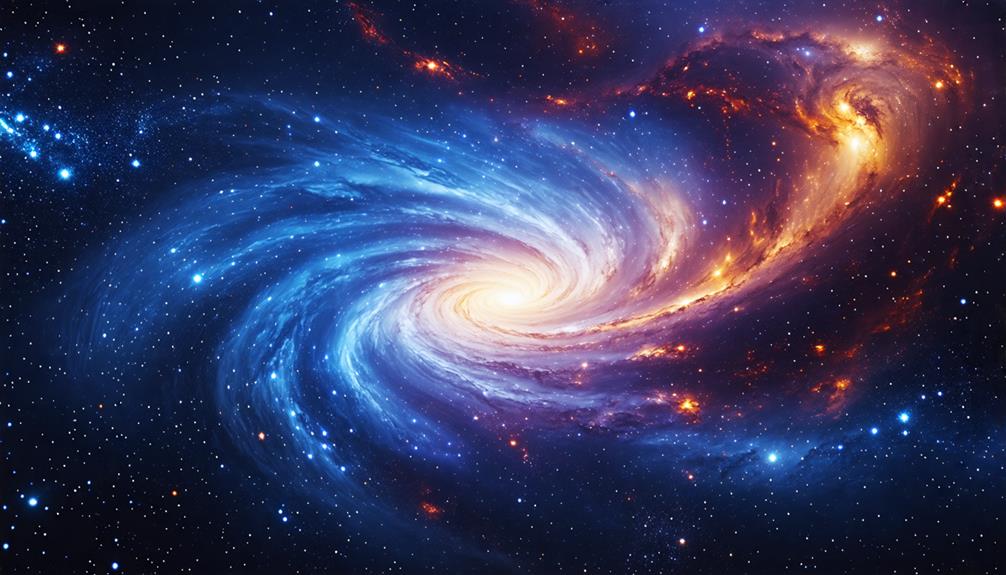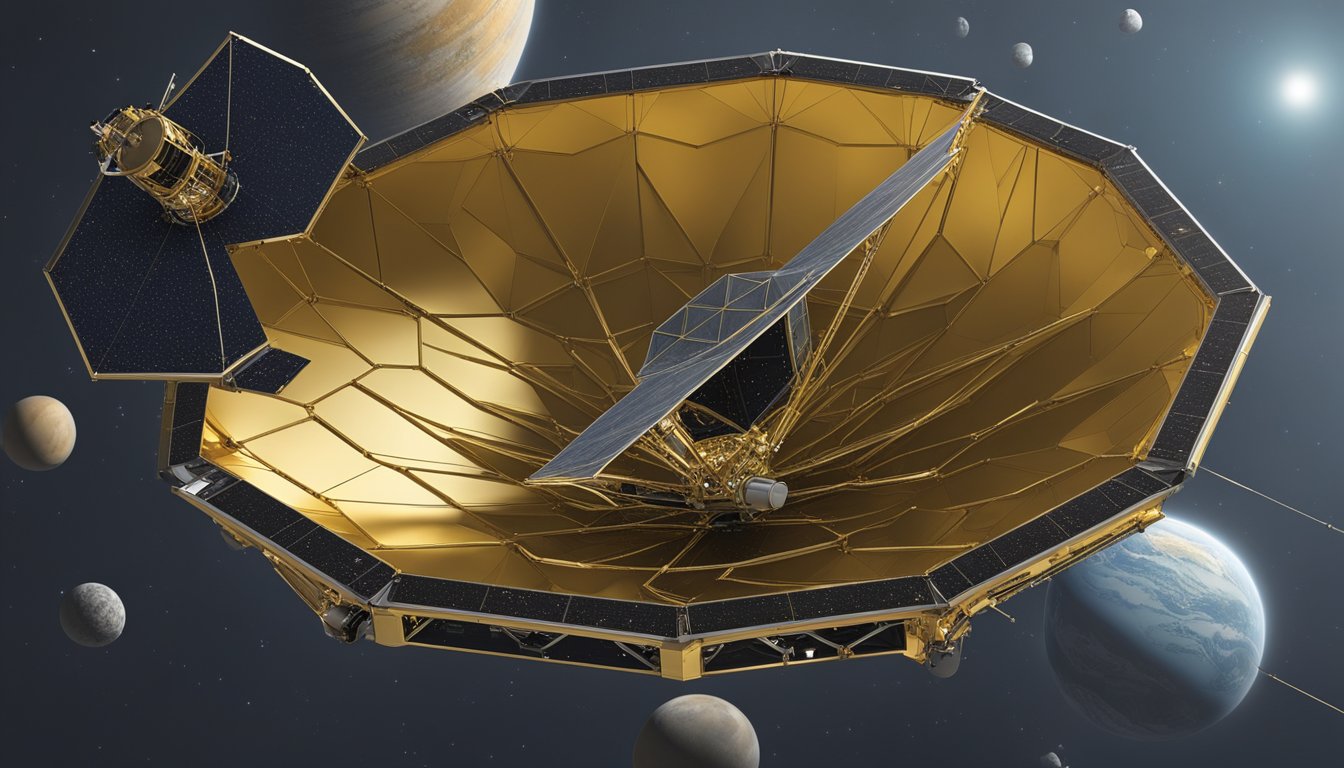Ultra-Diffuse Galaxies: The Dark Matter Giants of the Universe
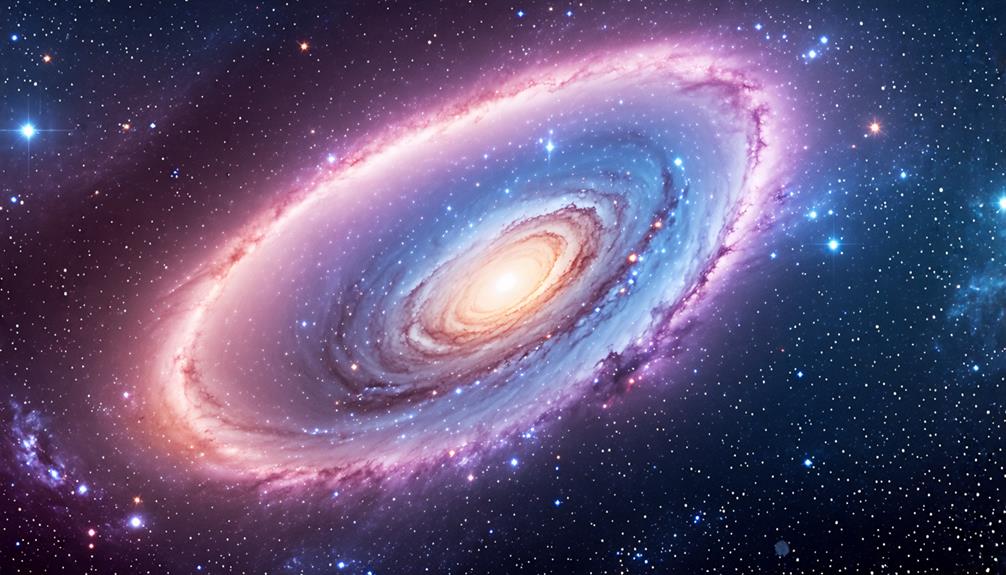
Ultra-diffuse galaxies (UDGs) are particularly intriguing due to their unique characteristics and the mysteries they hold about dark matter. Despite their large sizes and substantial dark matter content, these galaxies emit much less light compared to typical galaxies. This contrast raises important questions about their formation and their role in our understanding of the universe. By exploring the latest research and employing advanced observational techniques, we can begin to understand how UDGs might reshape our views on galaxy dynamics and dark matter. What secrets do these enigmatic giants still conceal?
Understanding Dark Matter
Dark matter, a mysterious and invisible substance, constitutes approximately five times more mass in the universe than regular matter, significantly influencing galaxy rotation and evolution. Understanding dark matter is crucial for comprehending galaxy formation, particularly in ultra-diffuse galaxies (UDGs). These galaxies are intriguing due to their substantial dark matter content, often resulting in overmassive dark matter halos that challenge conventional galaxy development theories.
These halos exert gravitational forces, affecting the dynamics of UDGs. The unique properties of these galaxies, such as low luminosity and minimal gas content, provide scientists with the opportunity to study dark matter's impact on star formation and evolution. Gravitational lensing techniques are essential for mapping dark matter distributions across the universe, revealing its role in shaping the structure of galaxies, including UDGs.
Observational Techniques in Astronomy
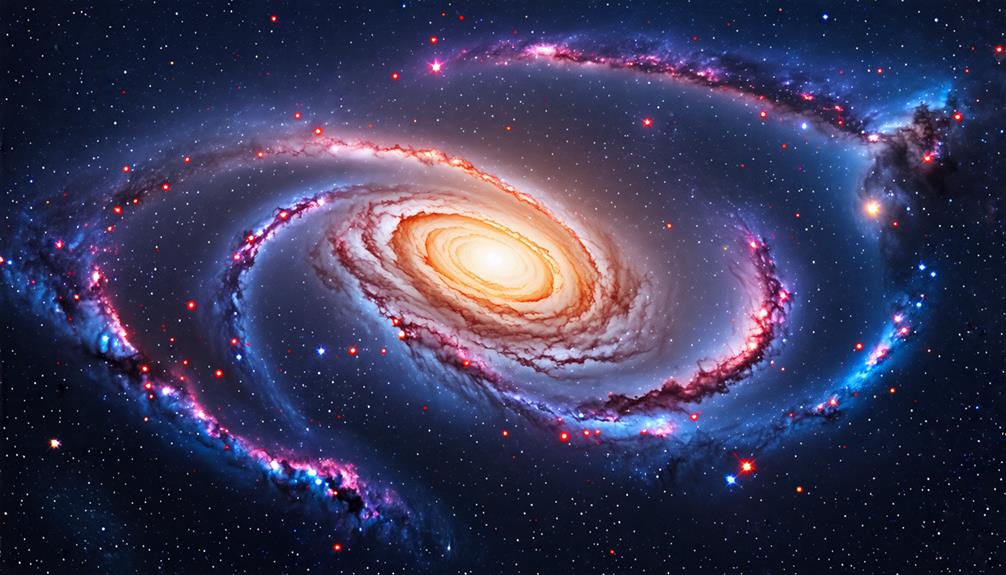
When studying ultra-diffuse galaxies, diverse observational techniques are crucial. Gravitational lensing helps understand the influence of dark matter, while galaxy rotation curves provide insights into their dynamics. Advanced imaging technologies further enhance the capability to capture detailed structures and properties.
Gravitational Lensing Methods
Gravitational lensing techniques enable astronomers to uncover hidden structures in the universe by demonstrating how massive objects distort light from distant galaxies. By analyzing this light bending, scientists can map dark matter distributions, particularly in ultra-diffuse galaxies (UDGs). This method is crucial for understanding the interplay between visible and dark matter, providing insights into galaxy formation and evolution.
A notable example is the Bullet Cluster, where gravitational lensing revealed a separation between visible matter and dark matter, offering strong evidence for dark matter's existence. Advances in observational tools, like the Dragonfly telescope system, enhance our ability to detect gravitational lensing effects in UDGs, leading to deeper insights into their dark matter halos.
Comprehensive sky surveys using these methods produce detailed 3D visualizations of dark matter structures. These visualizations not only confirm dark matter's presence but also allow scientists to explore its properties and distribution within galaxies. Gravitational lensing thus remains an indispensable tool for unveiling the mysteries of dark matter and its role in the universe.
Galaxy Rotation Curves
Galaxy rotation curves are crucial for understanding the interaction of stars and gas within galaxies, revealing the unseen influence of dark matter on their dynamics. When the rotational velocity of stars and gas is plotted against their distance from the galactic center, a fascinating pattern emerges. In many cases, stars in the outer regions of galaxies, including ultra-diffuse galaxies and dwarf galaxies, rotate faster than expected based on visible matter alone. This discrepancy suggests a substantial presence of dark matter.
Consider the following table to illustrate this concept:
| Galaxy Type | Observed Velocity | Expected Velocity | Dark Matter Contribution |
|---|---|---|---|
| Ultra-Diffuse Galaxy | High | Low | Significant |
| Dwarf Galaxy | Moderate | Low | Moderate |
| Spiral Galaxy | High | Moderate | High |
| Elliptical Galaxy | Low | Low | Minimal |
Gravitational lensing further enhances our understanding by mapping dark matter's distribution, as demonstrated in studies like the Bullet Cluster. Consequently, galaxy rotation curves play a vital role in unveiling the universe's hidden mass.
Advanced Imaging Technologies
Advanced imaging technologies have revolutionized our ability to observe ultra-diffuse galaxies (UDGs), enabling the detection of their faint light and providing deeper insights into their dark matter distribution. Instruments like the Dragonfly Telephoto Array have significantly enhanced our capacity to study these galaxies by making their subtle features more visible.
Gravitational lensing techniques are also crucial; they allow us to observe how light from distant galaxies distorts as it passes near massive UDGs, thereby revealing key information about the presence and distribution of dark matter. Comprehensive sky surveys have generated detailed 3D maps of UDGs, aiding in the understanding of their structure and dynamics in relation to dark matter.
Additionally, spectroscopic studies validate the existence and properties of UDGs, offering valuable data on their mass-to-light ratios and dark matter content. With the advancement of observational technology, instruments such as the James Webb Space Telescope are poised to enhance our comprehension of early galaxy formation and the role of dark matter in these elusive galaxies. By utilizing these advanced imaging technologies, we are not merely observing the universe; we are unraveling its profound mysteries.
Characteristics of Ultra-Diffuse Galaxies
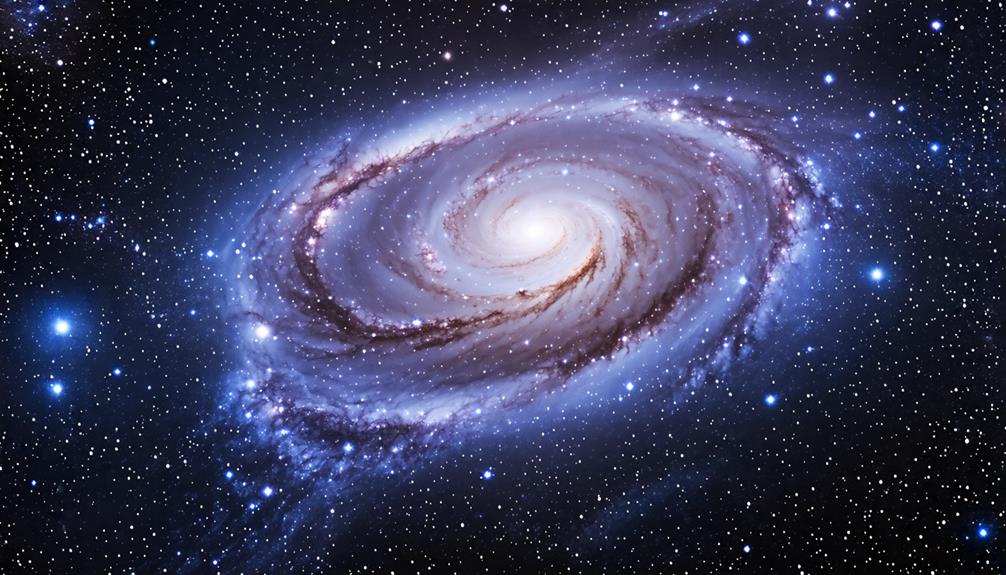
Ultra-diffuse galaxies (UDGs) are characterized by their low luminosity, making them less visible compared to brighter galaxies. These galaxies often possess significant amounts of dark matter, with overmassive halos that influence their structure and dynamics. Understanding these attributes provides insight into the unique nature of UDGs and their role in the universe.
Low Luminosity Features
Ultra-diffuse galaxies (UDGs) are notable for their extremely low luminosities, often containing just 1% of the stellar content found in the Milky Way. Despite their large sizes, their faintness makes them fascinating subjects in the study of galactic structures. UDGs typically have dimensions comparable to the Milky Way but exhibit much lower surface brightness due to their diffuse distribution of stars.
Here is a comparison of some characteristics of UDGs:
| Feature | UDGs | Typical Galaxies |
|---|---|---|
| Stellar Content | ~1% of Milky Way | Higher stellar density |
| Gas and Dust | Minimal amounts | Significant amounts |
| Environment | Often in galaxy clusters | Varied environments |
| Total Mass | Up to 100 billion solar masses | Variable, often lower |
The scarcity of gas and dust in UDGs leads to limited star formation activity, which is crucial for understanding their evolution. Their frequent presence in dense galaxy clusters suggests that environmental factors play a significant role in their development and survival. This raises important questions about the influence of dark matter in shaping these enigmatic galaxies.
Dark Matter Composition
Ultra-diffuse galaxies (UDGs) offer a unique perspective on dark matter, as their mass is predominantly made up of this mysterious substance. Unlike typical galaxies, UDGs have low luminosities and significantly fewer stars—ranging from 10 to 100 times fewer than those in the Milky Way. This stark difference underscores their high dark matter content relative to their visible matter.
Many UDGs also lack substantial amounts of star-forming gas and dust, which influences their formation and indicates that dark matter dynamics play a crucial role in their development. Observational data reveals that UDGs possess overmassive dark matter halos, challenging conventional galaxy formation models and suggesting a distinctive relationship between dark matter and galaxy structure.
These faint and diffuse entities, coupled with their large dark matter halos, provide valuable insights into the nature of dark matter and its role in galaxy formation processes. Continued study of UDGs will help unravel the mysteries of dark matter and its impact on the universe's diverse array of celestial objects, including dwarf galaxies. Understanding this connection is essential for a comprehensive grasp of the broader cosmic landscape.
Formation Theories of UDGs
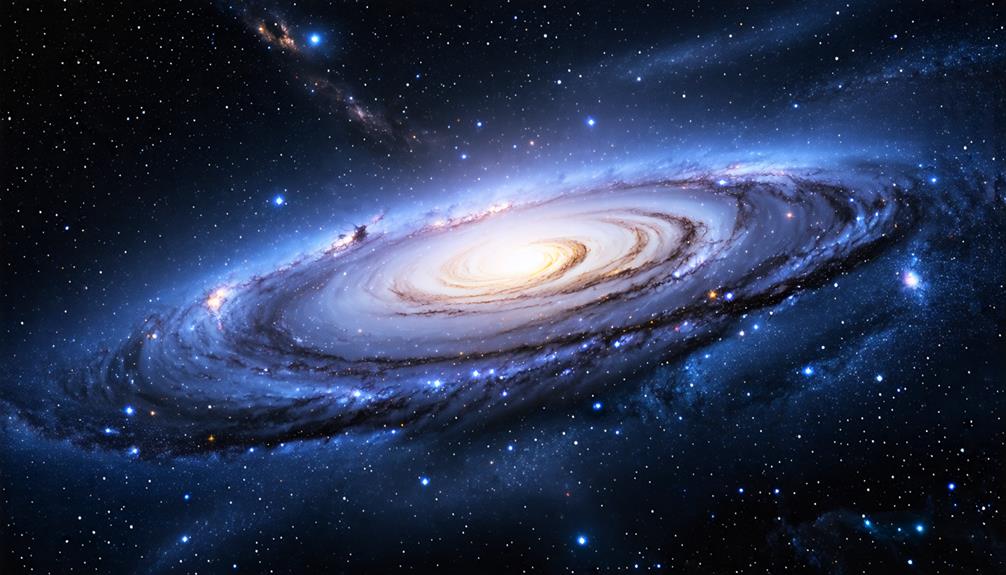
Researchers have proposed several intriguing theories about the formation of ultra-diffuse galaxies (UDGs), suggesting both primordial origins and the influence of external interactions. One theory posits that UDGs have primordial roots, resembling early dwarf elliptical galaxies that may act as remnants of the universe's initial structure formation. This implies a connection to the early universe and its dark matter distribution.
Supernovae explosions during star formation can push stars and dark matter outward, resulting in the expansion and lower density characteristic of UDGs. Tidal interactions with neighboring galaxies also significantly contribute to their formation, affecting their unique morphology and structure.
Statistical studies indicate that around half of UDGs might have formed through ram-pressure stripping, where interactions with the hot gas in galaxy clusters strip away their outer layers. Advanced computer simulations support these theories by recreating the characteristics of nearly 100 virtual galaxies, suggesting that UDGs are indeed dwarf galaxies, markedly smaller than large spiral galaxies. These formation theories offer fascinating insights into the nature of UDGs and their place in the cosmic landscape.
Recent Research Findings
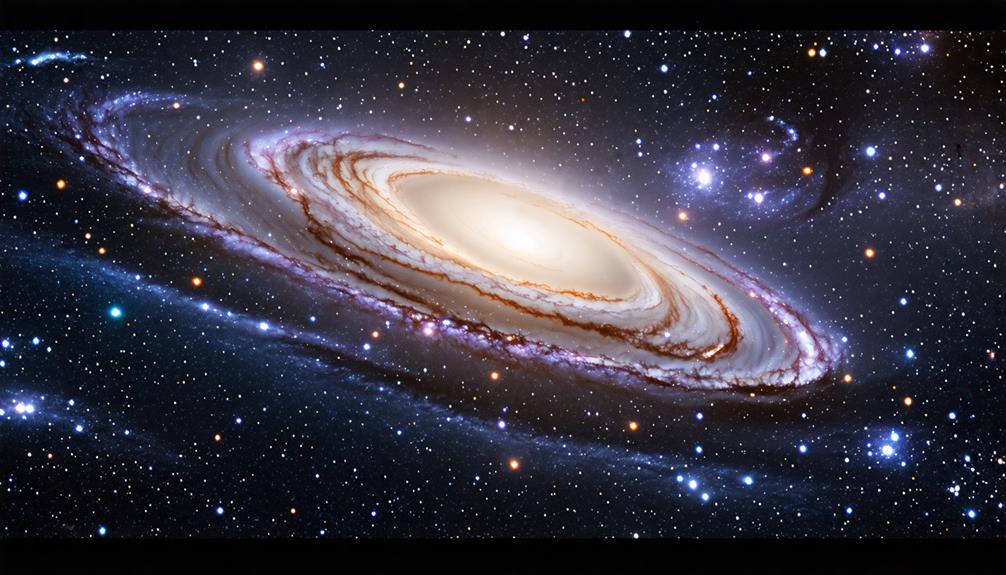
Recent findings have identified over 800 ultra-diffuse galaxies (UDGs) in the Coma Cluster, many of which challenge traditional galaxy formation models due to their significant lack of hydrogen. Research indicates that these galaxies, such as Dragonfly 44, possess dark matter-rich environments, with total masses comparable to the Milky Way while emitting only about 1% of its light.
Here's a quick overview of recent research findings on UDGs:
| Study Focus | Key Findings | Implications |
|---|---|---|
| Hydrogen Deficiency | Significant lack of hydrogen in UDGs | Challenges conventional galaxy formation models |
| Stellar Lifespan Analysis | Average stellar lifespan of 1.5 billion years | Evidence of recent star formation |
| Dark Matter Content | High dark matter presence in UDGs | Suggests unique formation processes |
| Environmental Impacts | Ram-pressure tails observed in UDGs | Indicates complex evolutionary histories |
| Simulated Galaxy Formation | Successful recreation of UDG characteristics | Supports theoretical models of UDG formation |
These findings enhance our understanding of ultra-diffuse galaxies and their unique properties, underscoring their significance in the broader context of galaxy formation and dark matter research.
The Role of Nube
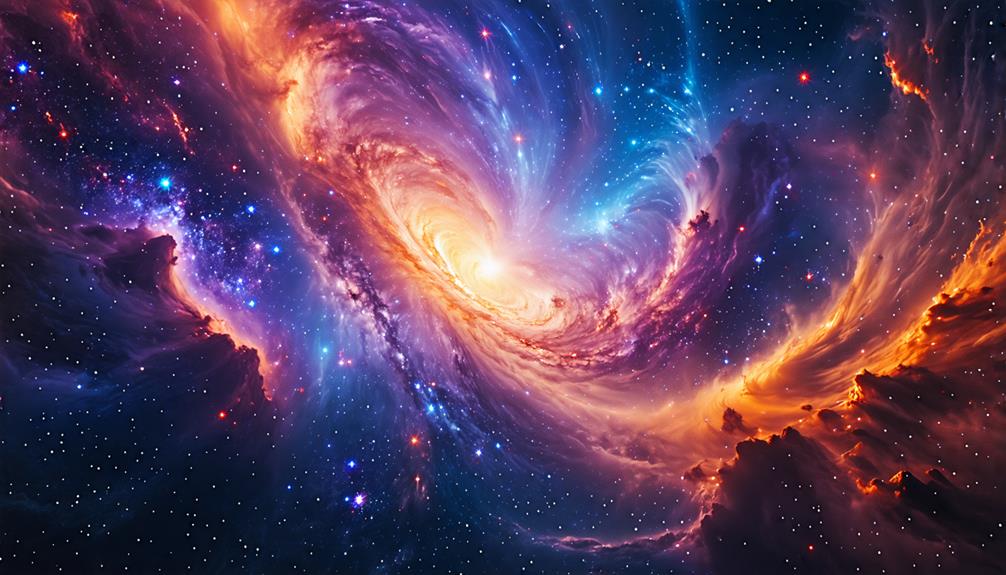
Nube stands out among ultra-diffuse galaxies (UDGs) for its unique characteristics and substantial hydrogen reservoir, providing new perspectives on galaxy formation and dark matter research. Discovered in 2015, Nube is the largest known UDG, located approximately 300 million light-years away. Its pancake-like shape and low star density are intriguing, but what truly sets Nube apart is its significant amount of primordial hydrogen. Unlike most UDGs, which typically lack gas reserves, Nube's hydrogen content suggests a different evolutionary path.
The galaxy's isolation, with the nearest large galaxy 1.4 million light-years away, indicates that it may have originated in a group but lost many of its stars due to interactions. This isolation, combined with its faint visibility and smooth dark matter halo, allows scientists to investigate dark matter properties more effectively. Nube's structure challenges traditional cosmological models, making it an essential benchmark for understanding galaxy formation. By studying Nube, researchers can gain insights into how dark matter influences galaxies and the processes that shape them. Its unique characteristics open new avenues of research, pushing the boundaries of our knowledge in cosmology.
Implications for Dark Matter Studies
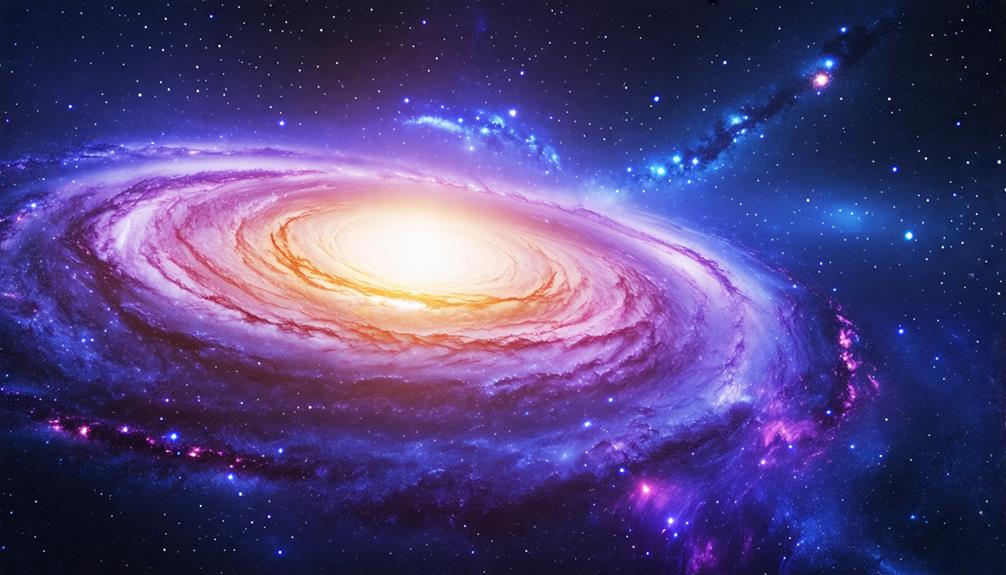
Exploring ultra-diffuse galaxies (UDGs) offers crucial insights for dark matter studies, as their unusual structures and low star densities challenge existing theories of cosmic formation. These galaxies often possess overmassive dark matter halos, prompting a reevaluation of galaxy formation and cosmic evolution models.
Consider the following implications of UDGs on dark matter research:
- UDGs have up to 1,000 times fewer stars than the Milky Way, yet they share similar sizes, underscoring their extreme dark matter dominance.
- Observations of UDGs like Dragonfly 44 and NGC 1052-DF2 could refine our models of dark matter behavior and distribution.
- The unique properties of these galaxies suggest a need for new candidates for dark matter, potentially reshaping our understanding of the universe.
Challenges in Galaxy Dynamics
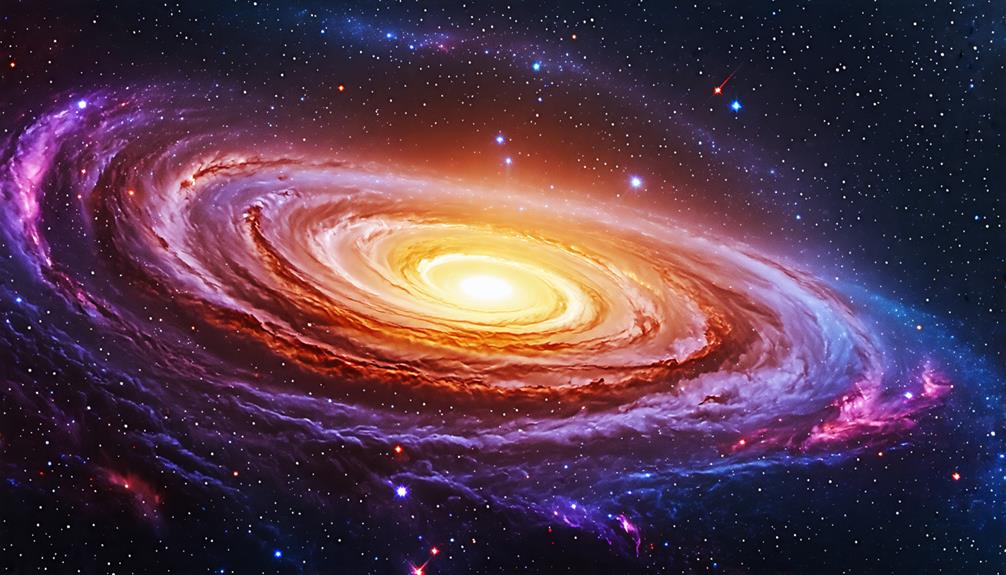
Understanding the dynamics of ultra-diffuse galaxies (UDGs) presents unique challenges, primarily due to their varied mass-to-light ratios and complex formation histories, which complicate the analysis of their dark matter content. The interplay between dark matter and visible matter disrupts traditional galaxy dynamics, as different UDGs exhibit divergent evolutionary paths.
| Challenge | Impact on Analysis | Possible Solutions |
|---|---|---|
| Varied mass-to-light ratios | Inaccurate dark matter estimations | Enhanced observational techniques |
| Complex formation histories | Incomplete understanding of UDG evolution | Advanced simulations |
| Dark matter stripping | Loss of dark matter during interactions | Detailed study of collision events |
| Lack of gas and dust | Limited star formation potential | Targeted observations of UDGs |
| Low visibility | Difficulty in studying dynamics | Improved imaging technologies |
These factors complicate the assessment of star formation rates and their significance within the broader cosmic landscape. As you investigate UDG dynamics, consider how these challenges influence our understanding of dark matter and the evolution of the universe.
Future Directions in Research
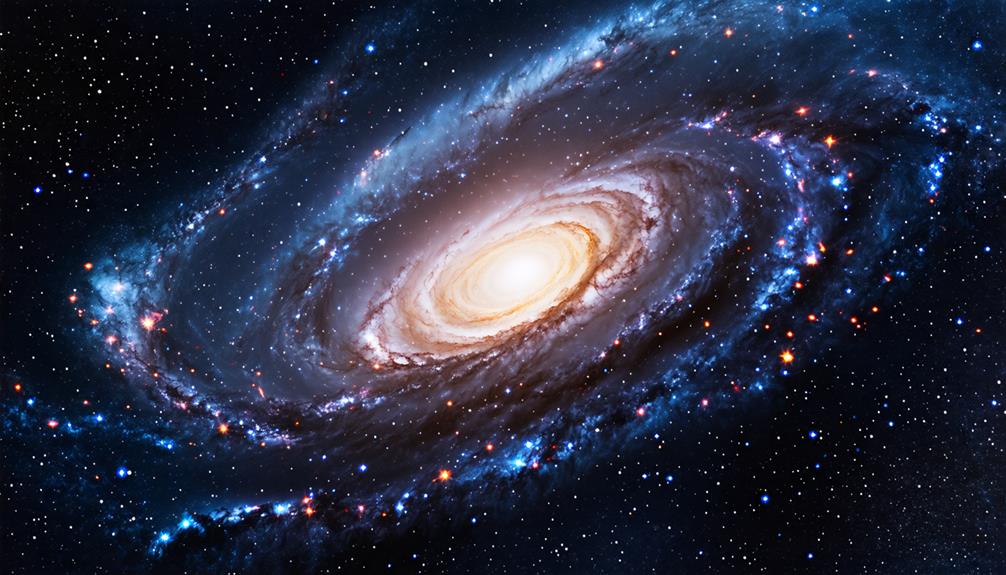
Future research on ultra-diffuse galaxies (UDGs) will leverage advanced telescopes and spectroscopic techniques to uncover their dark matter properties and formation mechanisms. Several ongoing observational initiatives are poised to significantly advance our understanding.
Key research directions include:
- Identifying More UDGs: Efforts are underway to discover galaxies similar to Nube, providing insights into dark matter's impact on galaxy evolution.
- Simulations: Researchers are refining models to explain UDGs' unique properties, often challenging conventional cosmological theories.
- Collaborative Efforts: Astrophysicists from various disciplines are collaborating to enhance our knowledge of UDGs and their significance in cosmic evolution.
Conclusion
Exploring ultra-diffuse galaxies reveals their unique characteristics and their significant role in understanding dark matter. These intriguing structures challenge existing models of galaxy formation and dynamics. Ongoing research and observations promise to uncover more surprises that could reshape our understanding of the universe. Future studies are poised to offer new insights into the mysteries of dark matter and its influence.

